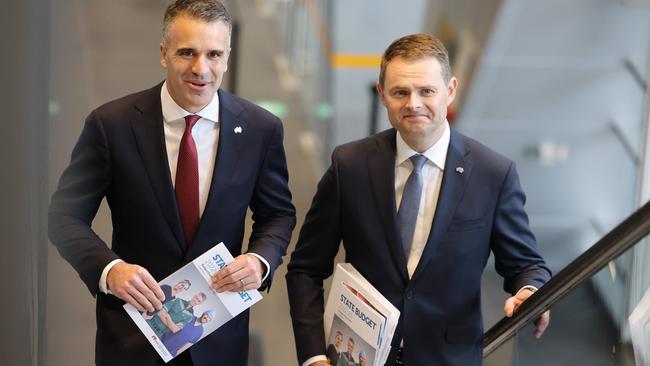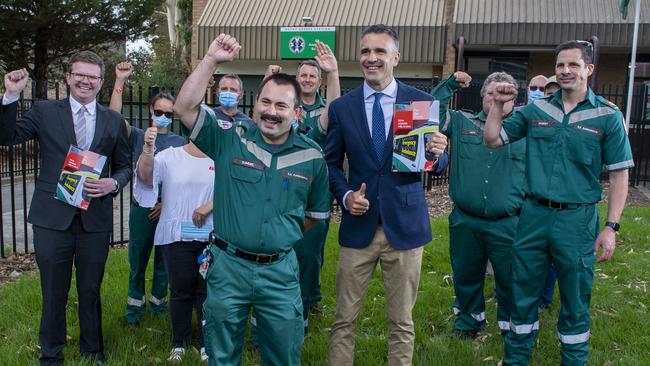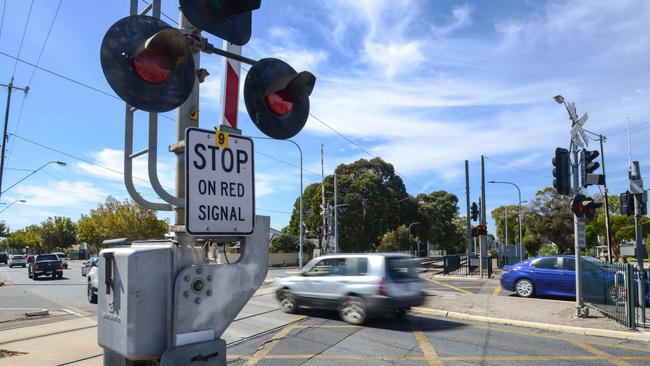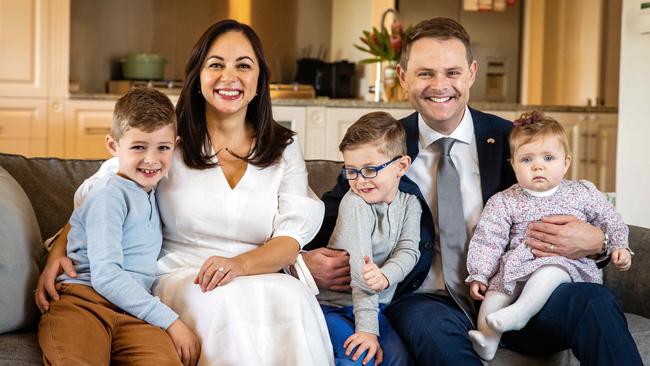SA Budget 2022: Challenge ahead as record $2.4bn spend on health in Treasurer Stephen Mullighan’s debut budget
Hundreds of new nurses, doctors and paramedics will be hired as part of a record $2.4bn spend on health – but the Treasurer admits recruiting them will be a challenge.
SA News
Don't miss out on the headlines from SA News. Followed categories will be added to My News.
More than 550 extra hospital beds and hundreds more paramedics will be funded in a record $2.4bn ploughed into health – but public servants are spared blanket cuts – in the Labor government’s debut budget.
Pumping cash into the sector that propelled Labor to a landslide election victory in March, Treasurer Stephen Mullighan revealed more than $213m to recruit 350 more ambulance officers, 304 nurses and 101 doctors over four years.
More than $837m is injected into health infrastructure, including $161m to start a Flinders Medical Centre upgrade, $121m to begin a new Mount Barker Hospital and $120m for a new CBD ambulance headquarters.
Speaking this morning, Mr Mullighan said it would be a challenge to recruit all the necessary extra health staff but they would be used where needed most.
“It certainly will be a challenge to recruit them all but we think an achievable challenge. We’ve made sure that the commitment we’ve made to additional nurses ... most of those will be required to staff those new hospital beds,” he told ABC Radio Adelaide.
Labor’s pre-election vow to slash public sector spending with a blanket 1.7 per cent efficiency dividend is abandoned in favour of agency chiefs having “flexibility to deliver savings” without being required to cut staff – other than executives.

Handing down a $233m surplus for 2022-23, Mr Mullighan declared an inflation surge not experienced for decades had complicated the challenge of delivering election promises “while minimising further impact on the state’s finances”.
Opposition Leader David Speirs accused Mr Mullighan of delivering “a beginner’s budget” that slashes the public sector, creates 20,000 fewer jobs and had “next to no cost-of-living support”.
In his budget speech, Mr Mullighan argued the state had been beset by economic challenges before the Covid-19 pandemic struck, including slow wage growth, declining industries and concerning unemployment rates.
“So, now, at this pivotal moment in our state’s history, we should not seek to return to life as we knew it before the pandemic,” Mr Mullighan said.
“Indeed, to do so would be a grave mistake and a wasted opportunity for South Australia.”

Mr Mullighan also revealed:
■ SA Health would be spared $400m in savings targets imposed by the former Liberal government;
■ Another cost blowout is likely to the $2bn new Women’s and Children’s Hospital;
■ Revenue surges of $887m from GST and $980m in state taxation, particularly stamp duty of $400m more than expected;
■ Three major road projects as part of a $18.6bn infrastructure program, including $400m for Marion Rd tram crossing upgrades promised during the federal election campaign;
■ Return of annual mid-year intake for preschool and reception, costing $72.4m over three years;

■ Five technical colleges to stem skill shortages costing more than $200m;
■ Skills funding of $12.7m to expand TAFE courses and $8.8m for training in high-demand industries such as bricklaying, chefs and concreting;
■ A promised $593m for a Whyalla hydrogen power plant, which has yet to be costed by the market;
■ More than $70.2m to return the Adelaide 500 supercar race from December;
■ A $100m Economic Recovery Fund to drive jobs growth and investment; and
■ Free public transport at all times for seniors in a $5.2m plan.

Mr Speirs condemned flatlining jobs growth as the budget’s centrepiece, highlighting this would plummet from 3.25 per cent this financial year to 1 per cent over the next four.
The Liberal Opposition also attacked an absence of funding for universal three-year-old preschool, no broad cost-of-living support or tax relief, the abolition of $15.5m in funding for government-supported traineeships and net debt increasing to almost $34bn by 2025-26.
The North-South corridor’s “shock” delay had resulted in the Transport Department being commanded to achieve double the savings targets of others.
“Employment growth is guaranteed to flatline under Peter Malinauskas who has delivered an anti-jobs budget with no plan to keep South Australians in work,” Mr Speirs said.
Mr Mullighan recommitted to a pre-election vow to cut 50 public sector executive staff paid an average $200,000 – generating an estimated saving of $41.5m over four years.
But he said public sector staff cuts would not be mandated, despite these savings being outlined in the budget.
“It is this government’s view that there is significant opportunity to instead reduce costs on temporary and labour-hire staff, consultant and contractor expenses, travel and office accommodation costs, and so on,” Mr Mullighan said.
Warning the state’s balance sheet was burdened with record debt, Mr Mullighan insisted he had started to rein in borrowings because “the state budget must be put back on track”.
State debt is forecast to hit almost $34bn by 2024-25 but borrowings have shrunk slightly in earlier years – down by $1.3bn in 2023-24 to $30.2bn.
As revealed by The Advertiser, Mr Mullighan said Treasury had predicted debt would reach almost $65bn by 2035 if unchecked spending growth continued.
“The cost of servicing that debt, even at forecast interest rates, would be so high as to prevent additional spending in health, education, policing and other priority areas,” he said.
Even though Prime Minister Anthony Albanese has ruled out changing a GST deal that favours Western Australia, Mr Mullighan warned the state would be $289m worse off next year and faced “a severe revenue shortfall” unless this was remedied.





